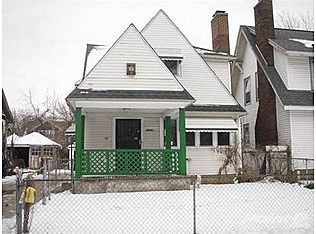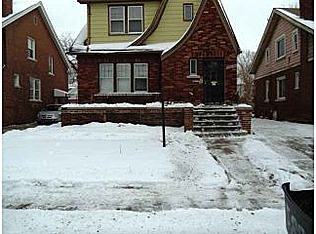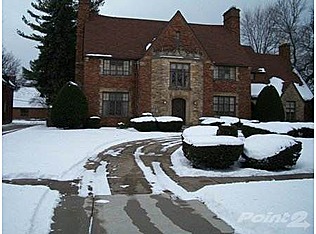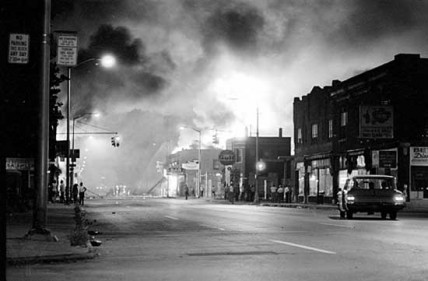Houses

The Conference is causing me to go through a lot of checked luggage. We are all going to be in Detroit shortly, and the Tigers are going to be hosting the Yankees, and I have tickets to one of the games.
It will be the first time I see the inside of the new stadium, the one that replaced the iconic Tiger Stadium (once Brigg’s) that was further downriver in the shadow of the Ambassador Bridge to Canada.
Sorry to be unpacking all this crap for you. I am still puzzling over the remarks of the President, and his case for what we are doing in Libya, where some of the rebels may, or may not, be al Qaida veterans. I am going to bite my tongue for now, but I have to say that I have my concerns.
So bear with me if I do something else this morning. I was born in Detroit a long time ago, in the summer when the snow was gone and the birds sang and the water of the big river glinted blue.
I lived in three places in the city. The first two I had no choice about, though they were nice enough. They still exist. The first was at 14897 Sussex St, as an infant, and later the folks moved out toward McNichols and rented a place up the block from the D&W Oil Company at 14230 Kentucky St.

According to the real estate estimates on Zillow, you could buy either one on your credit card.
The third place was twenty years later. The parents of my one of my pals had done a reverse migration back to the city, one of the few. They sold their sprawling ranch house near Troy and bought a mansion on Afton Street in the posh Palmer Woods neighborhood, one of the last flowers of the gentility developed inside the city limits in the twenties and thirties.
The Dodge Brothers had a compound there, really spectacular, and the place they bought for a song had a greenhouse and slate roof and walnut paneling and butler’s pantry, among other things. Above the three car garage was the maid’s quarters that they kindly offered me for $75 a month.
The publishing company that gave me my first job insisted that I actually live in the city, thinking (correctly) that if I stayed in Ann Arbor I would be tempted to screw off rather than peddle text books to Wayne State University, Marygrove, the Detroit College of Law, Lawrence Tech and U of D.

It was six years after the insurrection, and it was the time I got to know the city pretty well, and what was going on in the aftermath of what happened in 1967.
My folks got the hell out of Detroit when they could. My brother Spike arrived while we were still on Kentucky Street, and Magpie was pregnant with Anook when we decamped for the northern suburbs. That is where we were when the city died, though it was not apparent at the time that it really was pretty much over for the Motor City. There was a lot of stuff down there, some really good stuff, and it would take a few more decades for it to get to where it is now.
Let’s not dance around it.
It is summer, 1967. Two-a-day conditioning practice has begun for the Maples football team. I am in town, at the house on Hawthorn Street next to the park in Grabbingam. It is a nice house. Raven is moving up in the auto business, and the folks have moved from the little place on Chester Street and into the more stately neighborhood off Maple Road where the Rouge River flows over the dam at the end of Quarton Lake and meanders through the cool green glens of he park.
I am sixteen years old and pretty full of myself. Raven and Magpie are Up North at the cabin with my brother and sister. Home alone, I am trying to clean up the wreckage of an ill-advised party when the radio begins to broadcast calls for National Guardsmen to report to the Armory.
Here is what unraveled through the course of the day, and created something that caused my little indiscretion to pale in significance and Raven directed me to follow him in the Rambler Ambassador station wagon and top off the gas tanks at the Marathon Station to ensure we could get away from the city just in case.
Apparently the cops had done their thing at a Blind Pig down on Twelfth Street, near the intersection at Clairmount Avenue. They were expecting to round up a few patrons with a couple four-man Tac Force squads, but instead ran into a buzz saw. There were more than eighty people inside, holding a party for two returning Vietnam veterans. The cops tried to arrest everyone, and called for back up to transport the arrestees. A crowd gathered to protest- it was hot that night and there were a lot of people still in the streets trying to stay cool.
After the last police car left, quiet should have returned, but it was a warm night and it did not. One thing led to another. A small group of men who had nothing better to do and no place to go lifted up the security bars of a clothing store nearby and broke the windows.
From this point of origin, looting and arson spread through the Northwest side of Detroit, then crossed over to the East Side. Within 48 hours Governor George Romney had called out the National Guard. Romney had been Dad’s boss at American Motors, and was a family icon.
Odd to think about, but I would have been in a lot of trouble about the party- as an example, some joker had taken a bite out of each apple in the big bowl in the kitchen and then carefully placed them back with all the bite marks concealed.
The party debris did not get me in a lot of trouble, since there were other fish in the fire.

President Johnson supported a return to order, and dispatched the 82nd Airborne on the riot’s fourth day. At the conclusion of five days of rioting, 43 people were dead, most (though not all) African-American, and 1189 were injured and over 7000 people had been arrested.
Thus began the long slide that killed off the center city, though if you were to engrave a date of death on the tombstone, it would the one that the Blind Pig on 12th Street was shut down: 23 July 1967.
It all kinda jumbles together with the riots of the next year, when Doctor King was gunned down, and all the other central cities in America were torched.
As a Detroiter, I am proud to say that we got to do it twice, and really have not stopped since.
Copyright 2011 Vic Socotra
www.vicocotra.com
